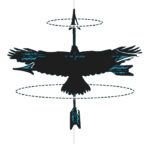 You can read Teresa’s story, “What kind of”, here.
Logo by: Robert James Russell
You can read Teresa’s story, “What kind of”, here.
Logo by: Robert James Russell
 You can read Teresa’s story, “What kind of”, here.
Logo by: Robert James Russell
You can read Teresa’s story, “What kind of”, here.
Logo by: Robert James Russell
 You can read Teresa’s story, “What kind of”, here.
Logo by: Robert James Russell
You can read Teresa’s story, “What kind of”, here.
Logo by: Robert James Russell